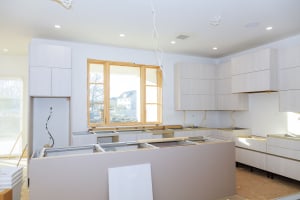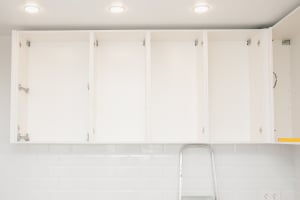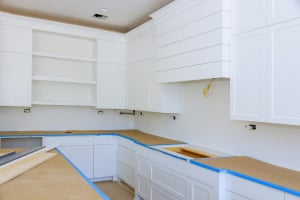Modern wood interior doors are easier to replace than ever, with most frames built to standard sizes–you can measure your existing doors or frames and select a customized door from 27estore up to thirty-six inches wide and eight feet high!
With a standard size for interior doors now used throughout the home building industry, there is less likelihood of needing to plane wood or trim frames to fit the exact dimensions. In this guide, we'll run through each step, including advice about hanging a perfectly balanced door that fits seamlessly into its frame.
Safety Guidance for Replacing Internal Doors
The first step is to ensure you have all the right tools and equipment to hand. Our premium interior doors are built with solid engineered panels, with the best material for interior doors that will last for years, so it’s wise to have an extra pair of hands to help.
If you need to saw or sand timber, a dust mask and goggles are important, and you can use earplugs if you need to use any power tools. Our interior doors come with assembly instructions and adjustment sheets to help you fit your doors and hinges easily. Still, if you are concerned about hanging a door yourself, you can always hire an experienced handyperson to assist.
We recommend you work through one phase at a time to ensure your doors are correctly hung–for example, we suggest sorting parts and accessories, so everything is to hand before you begin.
Measuring Your Interior Doors Accurately
Precise measurements ensure you order the right size door, but this can be tricky if you do not have an existing door you wish to replace! To measure a frame without a fitted door:
- Measure the height and width of the inner frame.
- Check the height at both the left and right-hand sides.
- Confirm the width at the top, middle, and bottom of the frame.
- If those dimensions vary, take the largest size and round up.
You take the largest measurement because it ensures that, even if the frame has settled a little, the door will still fit within the opening rather than having to make corrections to the frame. Doors in older homes are often non-standard sizes, although you can select a tailored width and thickness when you order. Buying a high-quality door with custom sizing is preferable because trimming the door by more than a few millimeters can cause it to weaken.
Tips for Replacing Interior Doors
The easy way to check that your new door is the right size is to lay it over the old one. Marking around the new door with a pencil will show you whether there are any size discrepancies.
You can use the same process to mark the frame height and verify that your new door will slot into the frame without any adjustments. Testing the fit is time well spent, and you can tap four nails into each corner of the door frame to keep the door stable while it isn’t yet attached. The idea is to have around a two-millimeter gap along the sides and top of the door; you can try sliding a penny into the gap to judge whether there is enough capacity to allow airflow and prevent the door from jamming in warm or damp weather.
Next, you need to measure the hinges. The straightforward option is to hold the door against the frame, using the existing nails, and possibly a wedge, to keep it stable. You can then quickly measure where the existing hinges are. To position your hinges, draw around each one with the pencil and mark the center for the screw holes.
Gently use a chisel using small, careful cuts to a shallow depth to accommodate the hinge plate, working at a forty-five-degree angle. From there, you can position your hinges, drill pilot holes (to prevent splitting the wood) and fix your screws in place.
Finally, when you are ready to hang your door, you should position it at ninety degrees and wedge or hold the door steady. Fix one screw at the bottom of each hinge first, and test that the door opens smoothly. You can then fix the remaining screws, and your new door is in position!













